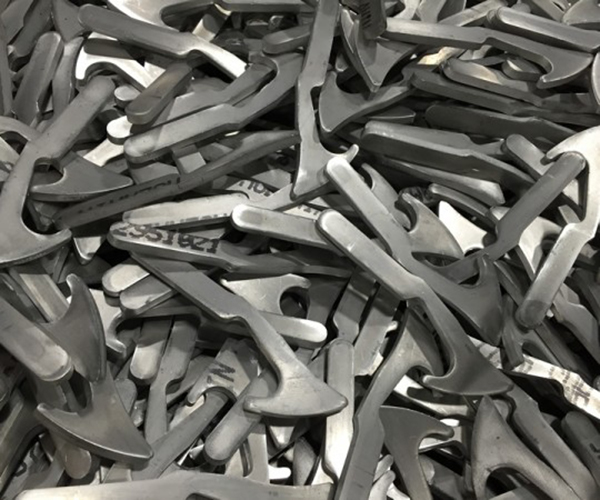PUNCHING

PUNCHING
At ABT Metal Manufacturing, we offer a wide range of metal manufacturing services to fit your project. We build parts for numerous industries like construction, firearms, energy, military, automotive, medical, and many others. We operate a 150,000+ square foot facility which allows us to do our work more efficiently and provide high-quality services. Whether it’s cutting, fabrication, stamping, machining, deep draw, or punching, we have you covered.
METAL STAMPING PROCESS
Metal punching is a process of metal fabrication. It removes a scrap slug from a metal workpiece every time a punch enters the punching die. This process will leave a hole in the workpiece. Some characteristics are involved in the punching process. One is the ability to produce holes in strip and sheet metal. This is done during a medium or high production process and is economical in its approach. Another characteristic is the ability to produce holes of different shapes quickly, which saves time. The process forces a hardened steel punch through a piece of metal. The diameter will determine the hole size that’s created in the workpiece. Though punched material is more commonly done in metal sheets, rolled material can also be punched to fit your needs.
WHAT IS METAL PUNCHING USED FOR?
Punching is nothing but a metalworking procedure. It is expansively used in the manufacturing industry because of its endless good. As the name suggests, it includes punching a hole in metal using a workpiece. Earlier, metal punching was done completely with manually operated pieces of machinery. In today’s times, punching processes are carried out with advanced computer automated equipment that is specially programmed with high standards and specially designed shapes.
Metal punching performed with machines is highly preferred because it forcefully forms holes through every kind of metal, be it hard, thick, or thin. When a metal manufacturing firm requires one or more holes to be created in a metal workpiece, then it usually performs punching as a metal fabrication process. In order to minutely understand the basics of this, below are some of the features of metal punching:
- It is one of the highly cost-effective procedures of forming holes in the metal to give average to high fabrication
- Punching is used to create multiple shaped holes in a metal sheet
- It is a fast process that consumes relatively less time than other metal fabrication processes
Metal punching is done with great precision and speed in order to create complex metal parts for different industrial purposes.
WHAT MATERIAL CAN BE PUNCHED?
Every time you use or come in contact with a metal, for instance, switching on an electronic appliance, you are coming in contact with the end result of the customized metal fabrication process. It is essential here to highlight the fact that modern metal punching equipment can adapt to multiple metals.
Brass, stainless steel, copper, iron, aluminum, and some alloys are certain kinds of metals that can be punched. As per the trend and requirements, steel punching is the one that always remains high in demand. Aluminum is also commonly used for punching because of its low resistance quality.
When it comes to iron, it certainly has the highest resistance ability for punching. Thus, iron punching requires particular tools to carry out the task. Copper, on the other side, is often used for punching because this material has an extraordinary level of flexibility.Though punching is widely used for metal materials, it can be performed on plastic pieces also. The procedure remains pretty much the same to make holes in plastic workpieces. It is usually used to get rid of excessive plastic from different workpieces throughout the phase of final assembly.
HOW DOES METAL PUNCHING WORK?
Punching is the procedure of creating a sign or shape on a surface by pressure or force with a tool. The workpiece is placed between a die and a punching tool which is made of tungsten carbide (a chemical compound that entails equal ratios of carbon atoms and tungsten) or similar metal that contains a high level of strength.
Now, you may be thinking, what’s the role of dies in the process of metal punching? The punch tool puts force downward into the die. It ultimately results in giving the desired shape while the remaining portion of the metal remains untouched. The shapes and sizes of the dies straightforwardly influence the quality of metal punching. Thus, dies play a significant role in the punching of metals.
In the earlier days, metal punching was typically performed by hands. Since it was a manual task, a lot of time was consumed, and thus the cost of the process used to be higher. Today, hand-punching machinery is still available in the market as they are used by a few firms and individuals. However, all the leading metal manufacturers prefer to accomplish punching using advanced equipment.
These modern equipment are powered by hydraulic pressure, which makes the task effortless. When a metal is punched as a sandwich between the punch tool and die, and cut material is collected separately for recycling purposes or later usage.